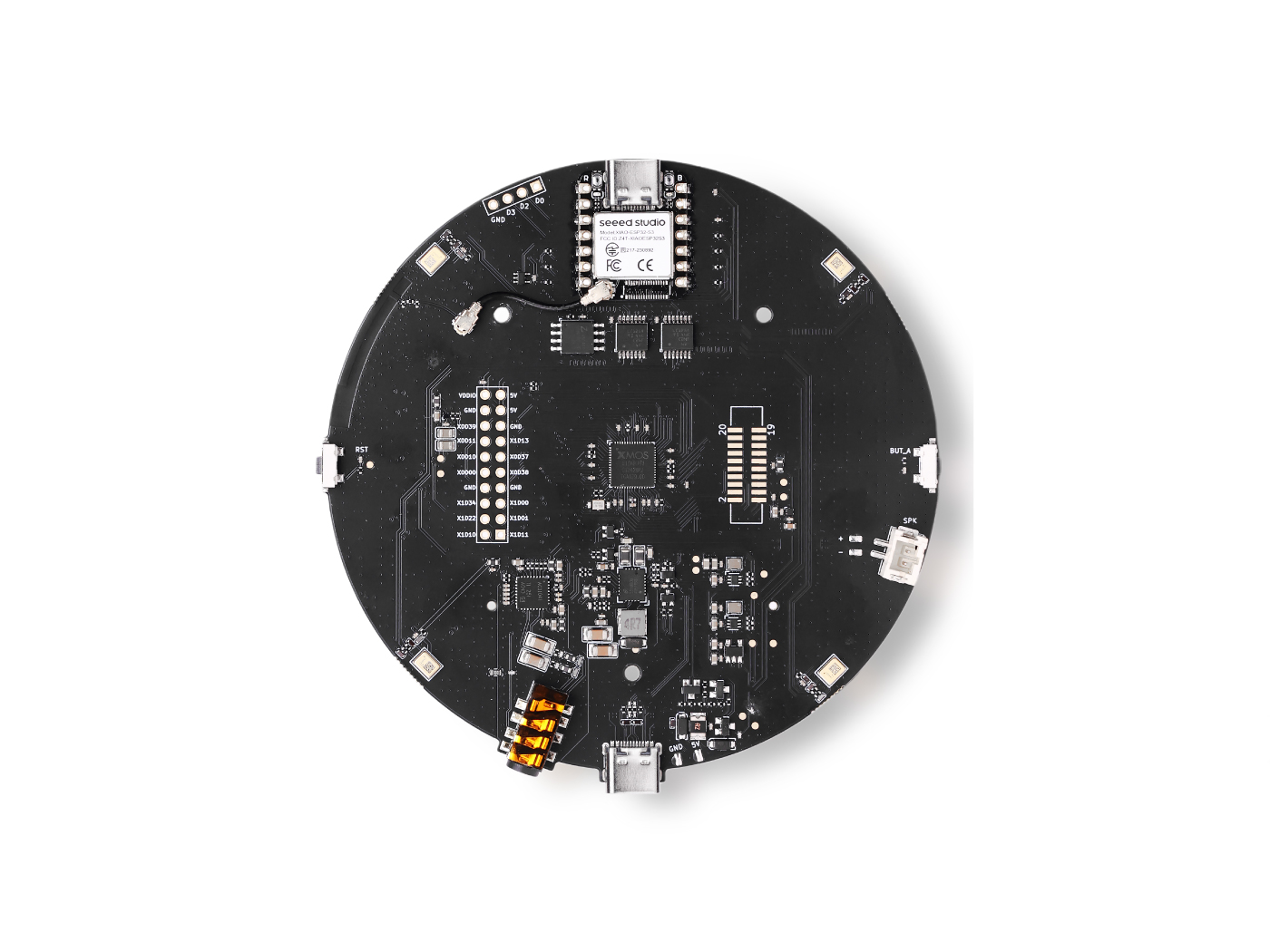reSpeaker XVF3800 USB Mic Array with XIAO ESP32S3 UDP Audio Streaming
Overview
This project demonstrates real-time audio streaming using the ReSpeaker XVF3800 microphone array with a XIAO ESP32S3 board. The audio is captured via I2S, and transmitted over UDP to a server running on a local machine, where it can be stored and processed as a .wav file.

Functionality Overview
This sketch performs the following tasks:
- Connects to the specified Wi-Fi network.
- Connects to a UDP server (e.g., Python script running on the host PC).
- Captures real-time audio via I2S from the ReSpeaker XVF3800 using the XIAO ESP32S3.
- Transmits the captured audio as raw data.
Arduino Code
Update these fields before uploading:
// WiFi credentials
const char* ssid = "Your-SSID";
const char* password = "WIFI-PASSWORD";
// UDP target
const char* udpAddress = "192.168.X.X"; // Change to PC/server IP
const int udpPort = 12345; // Port to send audio
Full Code (Streams ~5 seconds of audio)
#include "WiFi.h"
#include "WiFiUdp.h"
#include "AudioTools.h"
// WiFi credentials
const char* ssid = "Your-SSID";
const char* password = "WIFI-PASSWORD";
// UDP target
const char* udpAddress = "192.168.X.X"; // Change to PC/server IP
const int udpPort = 12345; // Port to send audio
WiFiUDP udp;
// Audio: 16kHz, stereo, 32-bit
AudioInfo info(16000, 2, 32);
I2SStream i2s_in;
I2SConfig i2s_config;
// 5 sec of audio = 128kB/s × 5 = 640 kB
#define PACKET_SIZE 1024
#define NUM_PACKETS 625 // 5 seconds worth
// Encoded WAV output to UDP
EncodedAudioStream out_stream(&udp, new WAVEncoder());
StreamCopy copier(out_stream, i2s_in, PACKET_SIZE);
void connectWiFi() {
Serial.printf("Connecting to WiFi: %s\n", ssid);
WiFi.begin(ssid, password);
while (WiFi.status() != WL_CONNECTED) {
delay(1000);
Serial.print(".");
}
Serial.println("\nConnected!");
}
void setupI2SInput() {
i2s_config = i2s_in.defaultConfig(RX_MODE);
i2s_config.copyFrom(info);
// XVF3800 pins
i2s_config.pin_bck = 8;
i2s_config.pin_ws = 7;
i2s_config.pin_data = 44;
i2s_config.pin_data_rx = 43;
i2s_config.is_master = true;
i2s_in.begin(i2s_config);
Serial.println("I2S input started.");
}
void setup() {
Serial.begin(115200);
AudioLogger::instance().begin(Serial, AudioLogger::Info);
connectWiFi();
setupI2SInput();
// Begin UDP
udp.begin(WiFi.localIP(), udpPort);
out_stream.begin(info);
// Start UDP transmission
Serial.printf("Sending 5 seconds of audio via UDP to %s:%d\n", udpAddress, udpPort);
udp.beginPacket(udpAddress, udpPort);
copier.copyN(NUM_PACKETS); // Copy exactly 5 sec of audio
udp.endPacket();
Serial.println("Finished sending 5 seconds of audio!");
}
void loop() {
// Nothing else, only runs once
}
Use Serial Monitor (115200 baud) to confirm connection and streaming status.

Python Script (To Receive and Save the Audio)
import socket
udp_ip = "0.0.0.0"
udp_port = 12345
sock = socket.socket(socket.AF_INET, socket.SOCK_DGRAM)
sock.bind((udp_ip, udp_port))
with open("output.wav", "wb") as f:
print("Listening for audio...")
while True:
data, addr = sock.recvfrom(4096)
f.write(data)
Listening to the Audio
Once the file is saved (output.wav), simply open it using any audio player such as:
- VLC
- Windows Media Player
- Audacity (for inspection)
Tech Support & Product Discussion
Thank you for choosing our products! We are here to provide you with different support to ensure that your experience with our products is as smooth as possible. We offer several communication channels to cater to different preferences and needs.